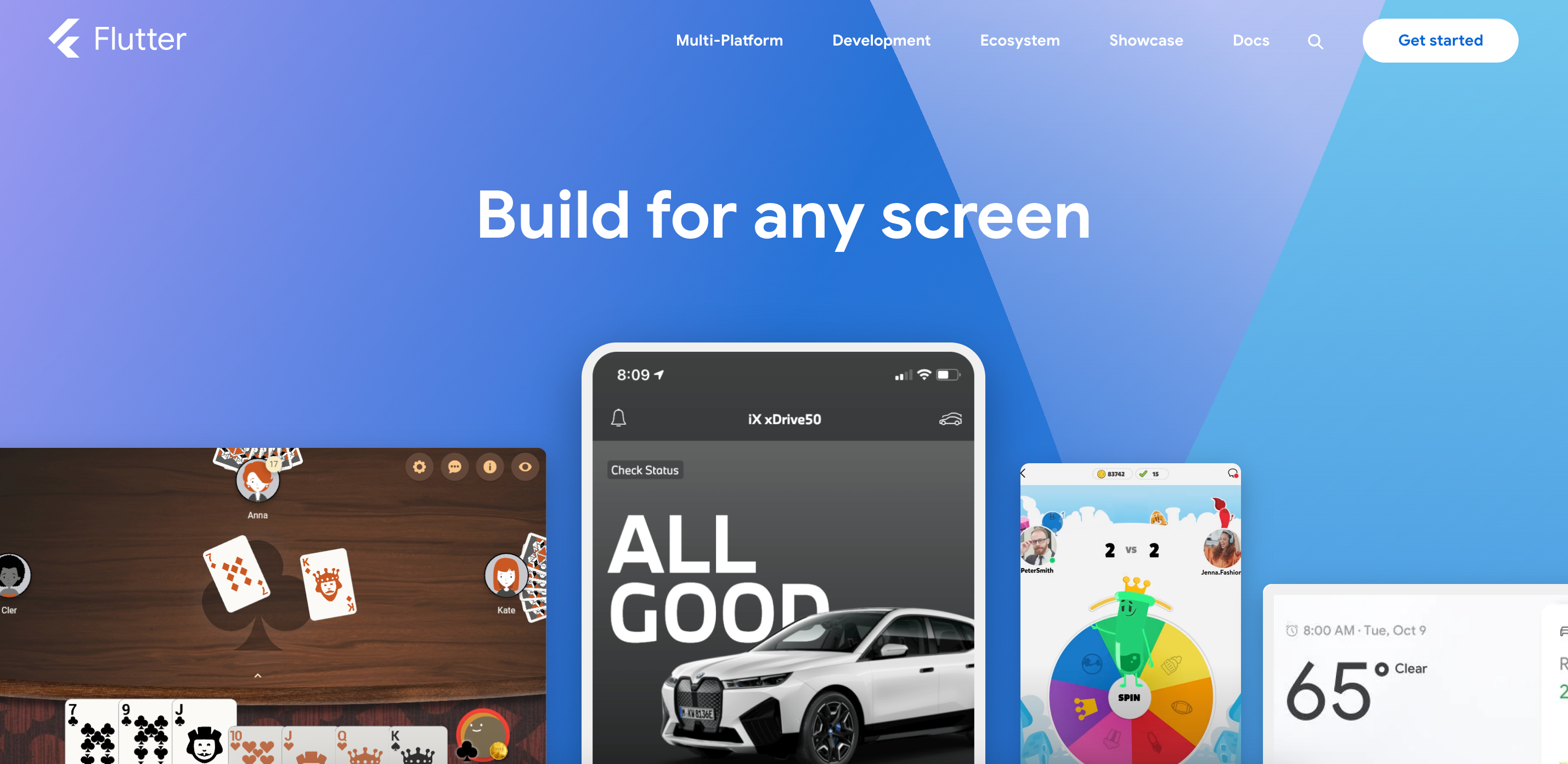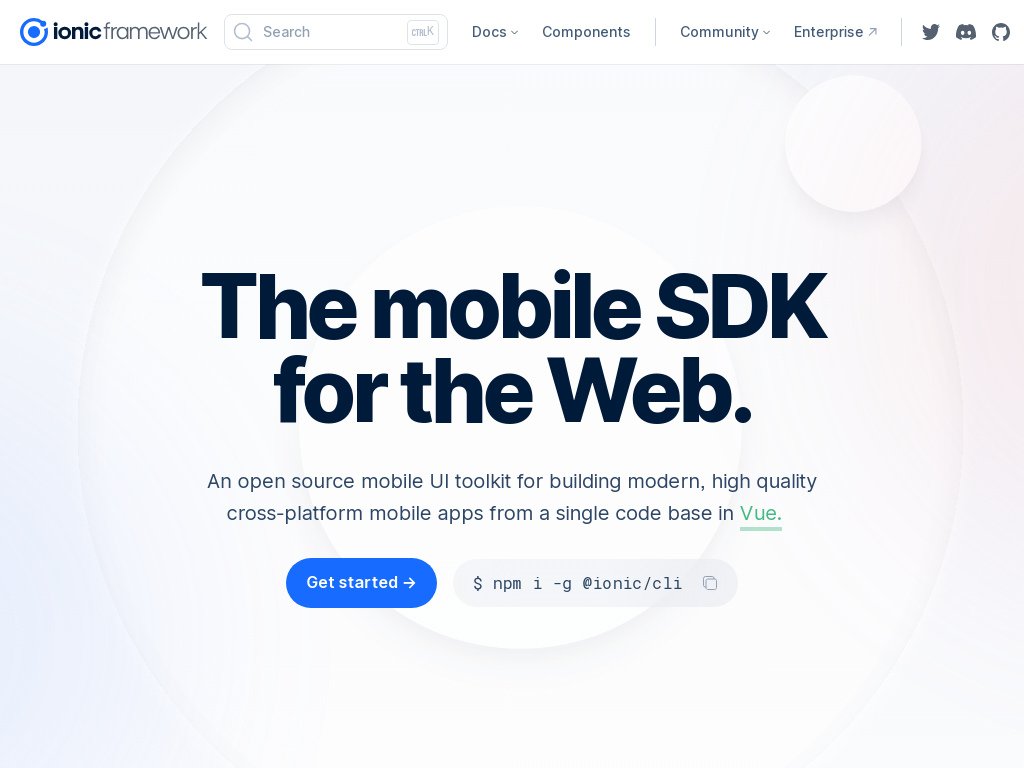
11 Best Mobile App Developers – Companies You Can Trust
Discover the cream of the crop in the world of mobile app development with our carefully curated listicle featuring the top mobile app developers. These industry-leading firms...
Imagine the cutthroat world of mobile apps as an intense competition. Each contestant, armed with their mobile app development frameworks, is battling to serve up the most efficient and easy-to-consume product.

Some might instinctively reach for React Native. It is, after all, a popular choice for many mobile app developers. But just like a chocolate chip cookie isn’t for every palate, React Native may also not be the universal solution for mobile app development.
In this article, we’ll give you a full explanation of why React Native, even though it was created by Facebook, may not always be a good choice. We’re taking a step back from the hype and the buzz to bring you an unbiased, fact-based perspective on React Native’s place in world of mobile app frameworks and dev.
Cross-platform mobile app development is a strategy employed by coders and developers to create mobile applications that can run on multiple mobile operating systems. It’s a cost-effective method to write hybrid apps using a single set of codes. Here’s why:
Discussing this further, these advantages add to the market appeal, decrease the time to market, and reduce the overall developmental cost. Yet, selecting the right development framework plays a critical role in harnessing these benefits.
When it comes to cross-platform app development, frameworks form the backbone of mobile application development. Several effective frameworks in the tech market have received favorable reviews, yet each possesses attributes that may suit one project but not another.
| Framework | Developer | Programming Language | Code Sharing | Key Features | Ideal for |
| Xamarin | Microsoft | .NET and C# | Up to 90% | Native user interfaces, faster development | Apps, requiring native interfaces; enterprise level applications |
| Flutter | Dart | High | Rich set of widgets, hot-reload, access to native features | High performance apps with rich UI, rapid prototyping | |
| Apache Cordova | Adobe Systems | HTML5, CSS3 and JavaScript | High | Uses web technologies, reduces learning curve for web developers | Simple applications, quick development, web developers |
Each mobile app framework has its merits and demerits that may influence your project’s outcome. Yet, React Native has drawn considerable attention, which calls for a closer examination.
React Native has transformed the landscape of mobile app development. Born from the need to streamline the app development process, React Native was created to enable developers to build mobile apps that run on both iOS and Android platforms using a single, shared codebase. This approach harnesses the power of React, a popular JavaScript library for building user interfaces, combined with native platform capabilities.

At its core, React Native allows for the development of genuinely native apps, not web apps in disguise. It communicates with native platform components and renders using native APIs, ensuring that apps have the look, feel, and performance of native mobile applications.
This framework has gained immense popularity due to its ability to dramatically reduce development time and resource requirements while not compromising on performance or user experience.
React Native, while powerful and versatile, is not a one-size-fits-all solution. Like all tech tools, it comes with its own set of benefits and drawbacks.

The primary advantage of React Native lies in its ability to develop applications for multiple platforms using a single codebase. This leads to a significant decrease in development time and resources.
Moreover, its open-source nature allows for a continuously expanding framework, with developers worldwide contributing to its improvement.
However, while the benefits are clear, the drawbacks can pose real challenges. An integral issue with React Native is its limited third-party library support.
Additionally, its reliance on JavaScript can lead to performance issues for apps with high graphical needs. It’s vital to be clear-eyed about these factors when considering a development framework.
Forewarned is forearmed. Understanding the limitations of React Native can aid in making an informed decision.

React Native does have some bottlenecks when dealing with native mobile applications with complex animations or transitions that require native performance. While brilliant for single-page applications, it might not fare as well with multipage applications that necessitate smooth navigation.
Moreover, React Native isn’t always the go-to choice for apps needing abundant device-native features. For top mobile app development, for instance, advanced GPS, media controls, or demure Android or iOS-specific features might call for workaround solutions or exclusive native code, limiting React Native’s cross-platform advantages.
Another salient issue is that React Native is still evolving. While this means an improved framework, it also suggests potentially disruptive changes that can impact existing applications.
Sometimes, nothing compares to learning from real-life experiences. Here, we highlight the various experiences of developers who have used React Native for mobile app development.

An upfront point to discuss is performance. Several developers have reported that apps developed with React Native perform slower compared to those written in native programming languages, especially when it comes to load times and animations. Plus, rendering complex functionalities may lead to performance bottlenecks.
Additionally, upgrade headaches have also been expressed by the developer community. With React Native being a continually evolving tool, frequent updates can prove to be a hindrance, sometimes even causing breakages in the app.
Finally, despite its touted code-reuse capability, app developers have stated that maintaining two codebases for iOS and Android can be tedious, especially when incorporating device-specific features. There is a level of complexity to manage in balancing the cross-platform advantage with maintaining individual optimization.
Wrapping it up, the real value of any tool is dependent on the requirements of each project; hence, it is crucial to evaluate various frameworks before making the right choice for you.
React Native isn’t the only development framework. It’s essential to look at alternatives before deciding to choose the one that suits your needs best.
As a robust open-source UI software development toolkit, Flutter offers a competitive alternative to React Native. Factors like performance, development speed, and community support play significant roles in deciding between these two.

Flutter outperforms React Native in terms of rendering speed. Where React Native uses the JavaScript bridge for interacting with native components, Flutter directly compiles native code, ensuring higher performance and smoother animations.
On the flip side, React Native wins the popularity contest. As an older framework, it boasts a larger community, providing access to many libraries and tools. This can offer further convenience during the development process.
While Flutter’s “hot reload” feature allows developers to experiment, build UIs, add features, and debug in no time, React Native isn’t far behind. It, too, offers hot reloading, expediting development and providing almost instant feedback.
Xamarin, a Microsoft-owned framework, uses C# for writing native Android, iOS, and Windows apps. It’s a mighty competitor, and here’s why.

With Xamarin, you can build visually stunning apps thanks to its high proficiency with hardware acceleration. Yet, it falters when it comes to a smaller community and a higher cost – problems you won’t encounter with React Native.
A striking feature of Xamarin is its impressive code reusability across multiple platforms, including iOS, Android, and Windows. This can result in significant time savings for your team.
Ionic is a popular open-source framework renowned for its ‘write once, run anywhere’ policy. It can build highly interactive web apps with a single codebase.

It’s often favored over React Native due to its extensive library of pre-designed components, plugins, and intuitive tools. On the other hand, it lags slightly in performance when compared to React Native.
One of Ionic’s crowning glories is its support for Angular, Vue.js, and React, providing flexibility to utilize any of these platforms. This could impact a team’s efficiency positively, especially when leveraging existing skills.
Spend time considering these aspects in comparison with your project goals and team skills. This will ensure a more thought-through choice.

Your mobile app project is unique – with its own set of goals, functionalities, and targeted user base. Hence, the selection of an app development framework is not a one-size-fits-all decision.
Custom requirements might emerge around integration needs, data handling, or simply because of the specific nature of the application being developed. If a bespoke, native-like user experience is paramount, React Native might fall short of expectations.
Prioritizing and mapping out your project’s specific needs will help identify the most suitable mobile app framework.
Knowledge and proficiency in JavaScript are key to effectively working with React Native. If your team is knowledgeable in this language, it can speed up the development process significantly.
However, if your developers are more familiar with Swift, Kotlin, or Java, then they might struggle with React Native. Evaluating developers’ skill sets and considering their learning curve for a new framework is crucial to choosing a framework that facilitates efficient development and superior code.
As your app grows in popularity and usage, scalability can become a concern. React Native allows for easy code sharing across platforms, but may pose challenges when integrating with native APIs, limiting scalability.
Maintenance is another factor to consider. With an active community supporting it, bugs in React Native apps are quickly identified and addressed.
However, the reliance on JavaScript inherently carries the risk of untyped codes leading to runtime errors, which can affect app maintenance. Weighing these factors can guide you in deciding if React Native is the right choice for your mobile apps.
React Native certainly offers promising potential for cross-platform mobile app development, with remarkable benefits of single-coding and cost efficiency. However, it is categorically unforgiving towards entry-level developers and can lag in native-like performance, especially for complex applications.

Understanding and assessing your business needs and technical capabilities are paramount in deciding the right framework for your mobile apps. If you prize performance over cost, or you’re looking at building a highly complex mobile application yourself, perhaps React Native may not be an ideal choice.
It’s time to take a moment to reassess: are you ready to navigate through reusability and efficiency at the possible cost of encountering sharp learning curves and potential performance bottlenecks?
And if you’ve decided that React Native falls short of meeting your mobile app development framework objectives, don’t fret. There’s a massive landscape of frameworks out there waiting to be explored.
Go on, begin your research and discover the tool that resonates best with your project requirements. And remember, there’s no perfect choice. There’s only the most appropriate framework for your specific needs.